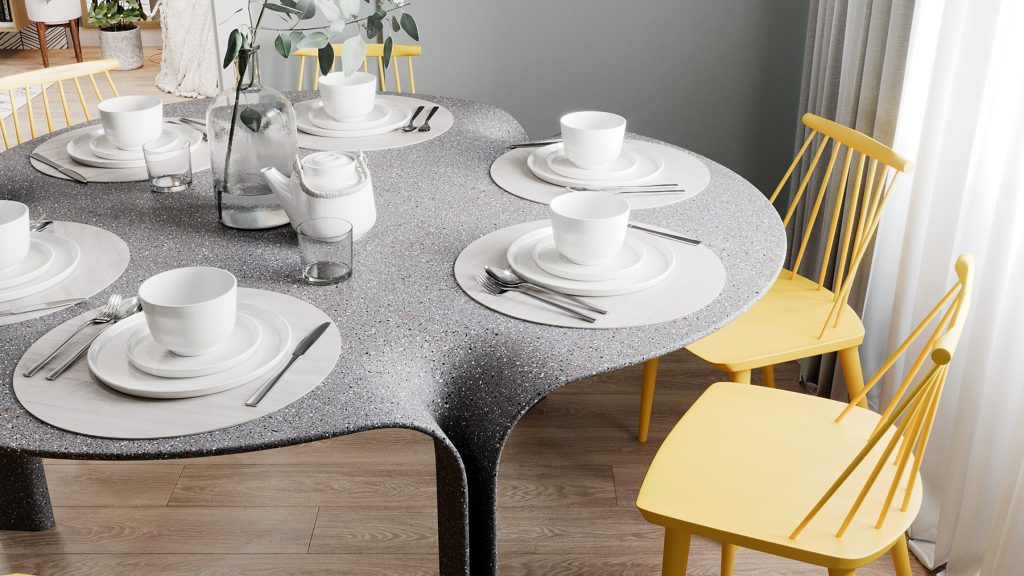
Pablo Vidiella
Pablo Vidiella was born in Madrid in 1984. Thanks to an interest in the arts, he studied architecture and, upon finishing his degree, moved to London to work with a renowned architecture studio and discovered technical and digital production.
On his return to Spain, he established Henka Lab, where he could experiment through an object-approach on different shapes and forms, with an understanding that the aim was to explore changes by manipulating pure geometries to create a new object without its essence being lost.
-
What are your references when designing architecture?
Throughout my career as an architect and designer, I have come across many types of architecture that have inspired my creations, and continue to do so. There is always prior research behind any project, seeking out references to be used as guides and starting points. There are currently several international studios, such as BIG and 3XN in Denmark, and MAD in China, with which I feel a particular affinity and are references for me. It would be a dream come true to work with any of them in the future.
-
What do you believe most helped you to get where you are today? Would you have changed anything along the way?
Good international experiences, without a shadow of a doubt. Nowadays, you need to move and see what’s out there, experience it for yourself. I know that architecture training in Spain is really good and solid, and highly technical. However, it can be closed off. Getting out there helps you loosen up and see that there are other ways of doing things. My time in London was crucial for what I’m doing now; I wouldn’t change a thing! Or maybe, I’d stretch out that period of my life a little bit more.
-
Are you familiar with COMPAC materials? What advantages do you see in using stone in architecture projects?
Yes, I know their materials but I’ve not had the chance to work with them. COMPAC always had a great reputation in the high-end decorative surfaces sector. I think their materials are not just for architectural uses but also for design in general. In addition to versatility and visual variety, stone possesses certain characteristics in terms of durability, thermal inertia and insulation capacity that make it really interesting and advantageous for use in architectural projects.

-
What would you say to young architects looking to work on a model like yours?
I think architecture should get involved in all design stages, wherever possible. We have the capacity to do it. Our model comprises experimenting with small-scale forms and we see our pieces as small works of architecture. At the end of the day, we need to be aware of nearly all the same determining factors behind functionality, beauty, structure and construction seen at a larger architectural scale. Nonetheless, let’s say that small-scale provides an extra layer of creative freedom, which is what I’m looking for at this stage in my career. I think that working at this design scale is really interesting for young architects as the level of learning and attention to detail is really high.
-
What is your dream project? How would you like to leave your mark on it?
My work underscores key concepts in architectural design, such as synthesis and abstraction. This means I can experiment with forms and methods of manufacture, as well as rediscover the curve and curved surfaces, which terrified me before due to my lack of experience. In this sense, I’d say that my dream project would be taking all this knowledge and using it at an architectural or urban scale, and be useful for my home city.
-
What is your greatest source of inspiration?
Nature inspires my work. We are surrounded by beauty with an immense variety of fascinating geometries and materials. All of them have a biological and evolutionary basis. It is a slow but perfect process that fascinates and permeates my work.

-
What role would you say technology plays in your projects? Do you think it represents an advantage or a challenge? How would you like to include it in your projects?
Technology is key to attaining the geometric and constructive complexity of my pieces. Without it, they would simply not be viable. I believe technology is a basic, essential tool for architecture and design in general—we cannot turn our backs on it. Nevertheless, nor should we overlook craftsmanship and the ‘imperfection’ of human eyes and hands I think an ideal creative scenario would be one that manages to bring together and harmoniously combine both aspects. That’s what we try to do: each piece is digitally tooled to then be assembled, reviewed and finished as a whole in a handmade approach.

-
Is there any project your working on now that you’d like to mention?
I’m currently working on designing a chair inspired by nature and plants: so simple yet so complex. It’s a real headache at the moment! It’s one of those things that until you try it in person, you don’t know whether it will work. In short, a beautiful challenge.

